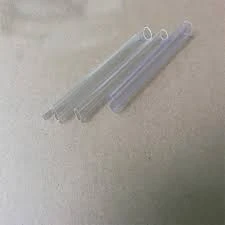Lis . 01, 2024 14:41 Back to list
High-Density Polyethylene Pipes for Sprinkler Systems and Irrigation Applications
Understanding Sprinkler HDPE Pipe A Sustainable Solution for Irrigation
In the realm of modern irrigation systems, the choice of materials plays a pivotal role in efficiency, durability, and environmental sustainability. One such innovative solution is the High-Density Polyethylene (HDPE) pipe, widely used in sprinkler irrigation systems. Known for its resilience and adaptability, HDPE pipes have changed the landscape of agricultural practices, offering numerous benefits that enhance water management and resource conservation.
What is HDPE Pipe?
High-Density Polyethylene (HDPE) is a thermoplastic polymer known for its strength-to-density ratio. In terms of irrigation, HDPE pipes are designed to withstand the rigors of outdoor environments while facilitating efficient water delivery. Typically composed of recycled materials, HDPE is also lightweight yet strong, making it remarkably easy to handle and install compared to traditional materials like PVC or metal.
Advantages of Using HDPE Pipes in Sprinkler Systems
1. Durability and Longevity One of the most significant advantages of HDPE pipe is its remarkable durability. Resistant to corrosion, rust, and chemical damage, HDPE pipes can last for decades without deteriorating. Their robust nature ensures that they maintain structural integrity under various weather conditions, thereby minimizing maintenance costs over time.
sprinkler hdpe pipe

2. Flexibility HDPE pipes are incredibly flexible, allowing for easy installation even in challenging terrains. This flexibility means that the pipes can bend and curve as needed, making them ideal for irregular land shapes or sloped areas. This adaptability also reduces the need for additional joints, which can be a potential point of failure in other piping materials.
3. Environmental Friendliness With increasing awareness of environmental conservation, HDPE pipes stand out due to their eco-friendly properties. They are 100% recyclable and made from low-impact materials, minimizing their carbon footprint. Utilizing HDPE reduces reliance on non-renewable resources, aligning with sustainable farming practices.
4. Efficiency in Water Delivery Sprinkler systems utilizing HDPE pipes ensure effective water distribution across agricultural fields, promoting optimal crop growth. The smooth interior of the pipes minimizes friction loss, leading to better flow rates and reduced energy consumption in pumping systems.
5. Cost-Effectiveness While the initial investment in HDPE pipes may be comparable to other materials, their long-term benefits far outweigh the initial costs. The reduced maintenance needs, longevity, and efficiency in water use contribute to overall savings, making HDPE pipes a wise investment for both small-scale farmers and large agricultural operations.
Conclusion
In conclusion, HDPE pipes offer a sustainable and efficient solution for sprinkler irrigation systems, addressing the pressing need for reliable water management in agriculture. Their durability, flexibility, and eco-friendly nature make them the material of choice for modern farming challenges. As the agricultural sector continues to evolve towards more sustainable practices, the adoption of HDPE pipes will undoubtedly play a crucial role in enhancing productivity while safeguarding our precious water resources. Embracing this innovative technology is a step forward in achieving a balance between agricultural needs and environmental stewardship.
-
Transparent PVC Pipe: Clear Flexible Tubing for Fluids
NewsAug.09,2025
-
Durable PP Rigid Sheet: Versatile & High-Quality Plastic Panels
NewsAug.08,2025
-
Premium Glossy PP Rigid Sheet – Durable & Versatile
NewsAug.07,2025
-
High-Quality HDPE Sheet | Durable Plastic Panels
NewsAug.06,2025
-
High-Precision PVC Rigid Sheets for Vacuum Forming | AI-Optimized
NewsAug.05,2025
-
Durable PVC-M Water Supply Pipes | 60-Year Life
NewsAug.04,2025

